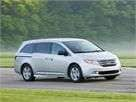Recent Articles
Popular Makes
Body Types
5 Used Hondas vs. 5 New Hondas
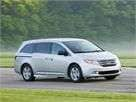
Choosing to buy a new Honda car or SUV versus buying a used model is often a difficult choice to make. On both sides of the equation you have Honda’s reputation for reliability, fuel economy and practicality. Used Honda automobiles provide great value for the money, while new Honda models offer access to the latest designs, features and equipment.
Sometimes, the differences between a recent used car and a brand new one can be minor, which can tip you in the direction of a previously-owned example. Let’s take a quick look at five new and used Honda vehicles and see how they stack up.
01. New Honda Civic vs. Used Honda Civic
Good news for bargain-hunting compact car buyers: there are very few differences between the 2011 Honda Civic and used examples of the automobile dating back to 2006, when the current platform was first introduced. Available in sedan and coupe body styles, as well as a sporty Si model and a hybrid edition, the Honda Civic has something to offer almost any driver. The base model Honda Civic features a 1.8-liter, four-cylinder engine that is rated at 140 horsepower, and fuel mileage for the car shows as 24-mpg around town and 36-mpg on the highway. For those seeking an even thriftier ride, the Civic Hybrid returns 40-mpg city and 43-mpg highway from its 1.3-liter, four-cylinder engine and battery-powered electric motor combo. Performance fans would do best to select the Si trim, which offers up 197 horsepower from a specially-tuned 2.0-liter, four-cylinder engine that is matched with a six-speed manual transmission.
It’s true that over the years, the Honda Civic has gained a few features and rearranged its trim levels, making the new model the most “up-to-date” edition of the car. By and large, however, there are very few differences between new and used Honda Civics, which means that you really can’t go wrong within the 2006 to 2011 window.
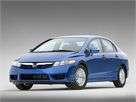
02. New Honda Pilot vs. Used Honda Pilot
The 2011 Honda Pilot is the latest version of a generation of mid-size crossovers that stretches back to 2009. 2008 and earlier models are still good buys on the used SUV market, but there are some key differences between the most recent Honda Pilot and older editions. Most notable is the vehicle’s powertrain, with 2008 models featuring a 3.5-liter V-6 engine that generates 244 horsepower and 240 lb-ft of torque, which is 6 ponies and 13 lb-ft of twist less than the same size engine in the current Pilot. Not only is the new Honda crossover more powerful than its predecessor, but it is also more efficient. Its fuel mileage rating of 17-mpg city and 23-mpg highway is 1-mpg better than the 2008 model in each respective measure. Both come with a five-speed automatic transmission and the option of all-wheel drive.
The 2009 to 2011 Honda Pilot provides very similar cargo room but better power, passenger room and fuel mileage compared to the 2008 and older generation. When looking at used models, make sure to pick up the refreshed model, and consider the latest 2011 edition if it fits within your budget.

03. New Honda Accord vs. Used Honda Accord
The 2011 Honda Accord mid-size sedan and coupe received some interesting improvements for the current model year, including better fuel mileage (topping out at 23-mpg city and 34-mpg highway for the 2.4-liter, 177 horsepower four-cylinder edition of the car). The Honda Accord V-6 coupe also gains steering wheel-mounted shift paddles when ordered with the five-speed automatic transmission instead of the six-speed manual, which is another new feature for 2011.
Other than that, the 2011 Honda Accord is very similar to the 2009 and 2010 editions of both the sedan and coupe. The standard four-cylinder motor produces the same amount of power, albeit with better fuel efficiency as mentioned above, as does the optional 190 horsepower, mid-level four-cylinder engine and the 3.5-liter V-6 (268 horsepower, 20-mpg city and 30-mpg highway for a 1-mpg increase, respectively).
It makes financial sense to seek out used 2009 and 2010 Accord models, but if fuel economy is a priority, it’s certainly worth investigating the 2011 edition of the car – especially a version with the entry-level four-cylinder engine.
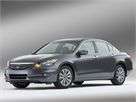
04. New Honda Fit vs. Used Honda Fit
The big news for the 2011 Honda Fit compact hatchback is a higher level of standard equipment, including power windows and door locks, a CD player, an iPod interface, cruise control, air conditioning and keyless entry. As before, the 2011 Honda Fit also offers the brand’s “Magic Seat” feature, which makes for a completely flat load floor when folded down that can haul up to 57.3 cubic feet of cargo.
The new Honda Fit maintains the same drivetrain that was introduced when the vehicle was redesigned in 2009, a 1.5-liter, four-cylinder motor that offers 117 horsepower as well as fuel mileage of 27-mpg in stop and go driving and 33-mpg during highway cruising. Transmission choices include a five-speed manual and a five-speed automatic, with the latter gaining steering wheel-mounted paddle shifters on the Sport model.
The bottom line when comparing the new 2011 Honda Fit versus a used Honda Fit? If you want as many standard features as possible, then go new. If you are satisfied with the still solid range of equipment found in older Fit models, then it makes sense to stick with a vehicle that offers the same drivetrain and fuel mileage for less money.
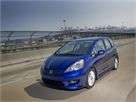
05. New Honda Odyssey vs. Used Honda Odyssey
The 2011 Honda Odyssey minivan has been completely redesigned for the current model year, and as such it offers the biggest gap between used and new of any vehicle on our list. Major changes for the Honda Odyssey include a much more stylish exterior look, higher end entertainment features including surround sound for the vehicle’s DVD player and a longer and wider platform that translates into more interior space, especially behind the first row. 148 cubic feet of total storage can be found inside the van, which is 1 cubic foot more than in 2010.
Horsepower for the new Honda Odyssey is somewhat improved compared to older models (248 versus 244 ponies), but more importantly, the 3.5-liter V-6 engine now gains cylinder deactivation technology across the entire lineup. This translates into fuel mileage of 18-mpg city and 27-mpg highway for models equipped with the five-speed automatic transmission, and 19-mpg city and 28-mpg highway for those featuring the six-speed auto unit. This handily beats the 2010 and older edition’s 17-mpg rating in the city and 25-mpg on the highway.
The verdict? The new Honda Odyssey is a worthwhile improvement over the used Honda Odyssey in many ways, and while the older van is still a solid used option, the 2011 Odyssey clearly outperforms it in most of the important categories.
